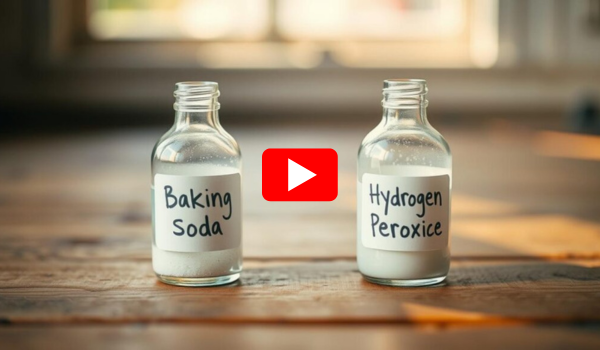Does Chlorine Kill Toenail Fungus? Truth & Treatment Insight
Contents
- 1 Understanding Toenail Fungus: A Brief Overview
- 2 What Is Chlorine and How Does It Work?
- 3 Does Chlorine Kill Fungi?
- 4 Does Chlorine Kill Toenail Fungus in Swimming Pools?
- 5 Can Household Bleach (Chlorine) Kill Toenail Fungus?
- 6 What About Chlorine Dioxide?
- 7 The Problem of Nail Penetration
- 8 Safer and More Effective Alternatives to Chlorine
- 9 How to Prevent Toenail Fungus
- 10 Does Chlorine Kill Toenail Fungus?
- 11 Final Thoughts
Toenail fungus is more than just a cosmetic issue — it can be persistent, embarrassing, and even painful. Affecting millions of people globally, this condition, medically referred to as onychomycosis, results in discolored, thickened, and brittle nails.
While various treatment options are available, both medical and natural, some people turn to common household substances for relief, and chlorine is one such item that sparks curiosity.
But the real question is: Does chlorine kill toenail fungus? Or is this just another urban myth passed along through word-of-mouth?
In this comprehensive blog post, we’ll dive deep into the science, risks, benefits, and realities of using chlorine as a treatment for toenail fungus.
Discover whether chlorine can effectively kill toenail fungus, its risks, and safer, proven treatments to help you tackle stubborn nail infections.
If you’re looking for clarity on whether chlorine can be your secret weapon in fighting stubborn fungal nails, this post will tell you everything you need to know.
Understanding Toenail Fungus: A Brief Overview
Toenail fungus is a fungal infection that usually begins as a white or yellow spot under the tip of your toenail.
As the infection progresses, it may cause the nail to discolor, thicken, and crumble at the edges. It can affect one nail or multiple nails, and in severe cases, the infection may cause pain or emit an unpleasant odor.
Common Causes:
- Exposure to warm, moist environments (like locker rooms, showers, or pools)
- Wearing sweaty or tight shoes
- Nail injuries or trauma
- Weakened immune systems
- Underlying health conditions like diabetes
Toenail fungus is caused primarily by dermatophytes, but yeasts and non-dermatophyte molds can also be culprits. These microorganisms thrive in dark, damp environments, making your toes the perfect breeding ground.
What Is Chlorine and How Does It Work?
Chlorine is a powerful disinfectant and chemical compound widely used to sanitize water supplies, swimming pools, and household surfaces.
It’s effective against a broad spectrum of bacteria, viruses, and other microorganisms due to its oxidative properties.
When chlorine comes into contact with microbes, it disrupts the cells’ proteins and essential enzymatic systems, effectively killing or inactivating them. This makes it excellent for water treatment and sanitation.
Does Chlorine Kill Fungi?
Here’s where it gets nuanced.
While chlorine is effective against many bacteria and viruses, fungi are more resilient organisms. Fungal cells have a robust, protective cell wall that makes them harder to eradicate with surface-level disinfectants, including chlorine.
Scientific evidence suggests that chlorine can damage fungal cells under certain conditions, particularly when used in high concentrations for prolonged periods.
However, the amount and duration of exposure necessary to effectively kill toenail fungus beneath the nail plate would be impractical and unsafe for human skin.
Does Chlorine Kill Toenail Fungus in Swimming Pools?
Some people believe swimming in chlorinated pools can treat or prevent toenail fungus. However, the reality is a bit different.
Standard pool chlorine concentrations (1–3 parts per million) are designed to keep bacteria and viruses at bay and prevent the spread of common infections, not treat established fungal infections lodged under the nail.
In fact:
- Toenail fungus can survive in chlorinated pool water.
- Fungal spores can persist in pool areas and wet surfaces
- Public pools can actually be a source of toenail fungus if hygiene standards aren’t strictly maintained.
While swimming in a chlorinated pool isn’t likely to make a fungal nail infection worse, it certainly won’t cure it either.
Can Household Bleach (Chlorine) Kill Toenail Fungus?
Household bleach is essentially a sodium hypochlorite solution — a chlorine-based disinfectant. Some home remedy enthusiasts recommend soaking infected nails in diluted bleach solutions.
Does It Work?
Bleach can kill fungi on non-living surfaces. When applied to human nails, it might superficially disinfect the outer nail plate, but it’s highly unlikely to penetrate the nail and reach the nail bed where the infection resides.
Risks of Using Bleach:
- Chemical burns
- Skin irritation
- Allergic reactions
- Damage to the surrounding healthy skin
- Nail weakening or discoloration
Most dermatologists strongly advise against using undiluted bleach or chlorine products directly on the skin or nails due to these significant risks.
What About Chlorine Dioxide?
Chlorine dioxide is a related compound that has shown more promise as an antifungal agent in laboratory settings.
It’s used in some disinfectant sprays and sanitizers and has demonstrated effectiveness against certain fungi.
However:
- Its use for toenail fungus is not FDA-approved.
- Clinical trials on its efficacy and safety for nail infections are limited.
- Concentrated chlorine dioxide can be hazardous if mishandled.
As with household bleach, the risks of skin irritation and damage outweigh the unproven potential benefits.
The Problem of Nail Penetration
The greatest challenge in treating toenail fungus is reaching the infection under the hard nail surface. Even prescription topical antifungals struggle with nail penetration, which is why many cases require oral medications or laser treatments.
Chlorine and bleach lack the chemical composition to deeply penetrate nails, making them ineffective for anything beyond surface disinfection.
Safer and More Effective Alternatives to Chlorine
If you’re battling toenail fungus, it’s wise to stick to treatments backed by clinical research and medical approval. Some of the most effective options include:
1. Oral Antifungal Medications
Prescription oral medications like terbinafine (Lamisil) and itraconazole (Sporanox) can successfully clear fungal infections from the inside out, though they come with potential side effects and require liver function monitoring.
2. Topical Antifungal Treatments
Medicated nail lacquers like ciclopirox (Penlac) and efinaconazole (Jublia) are designed to treat mild to moderate fungal infections. They’re safer than oral medications but require long-term, consistent use.
3. Laser Therapy
Laser devices target and destroy the fungus beneath the nail with light energy. It’s a non-invasive option growing in popularity, though availability and cost may be barriers.
4. Natural Remedies
Options like tea tree oil, oregano oil, and vinegar soaks have antifungal properties and minimal side effects. While scientific evidence is limited, they may be beneficial for early or mild infections.
How to Prevent Toenail Fungus
The best way to deal with toenail fungus is to avoid getting it in the first place. Here’s how:
- Keep feet clean and dry.
- Wear breathable footwear.
- Change socks daily.
- Avoid walking barefoot in communal areas.
- Use antifungal foot powders or sprays.
- Disinfect nail clippers and foot care tools.
- Trim nails straight across and keep them short.
Does Chlorine Kill Toenail Fungus?
No, chlorine does not effectively kill toenail fungus when applied through pools or direct contact with household bleach.
While chlorine has broad-spectrum antimicrobial properties, it cannot penetrate the dense keratin structure of the nail plate to reach and eradicate the fungal infection underneath.
Moreover, attempting to treat toenail fungus with bleach or chlorine carries serious risks like skin irritation, chemical burns, and nail damage, with little to no proven benefit.
The most reliable ways to manage toenail fungus involve:
- Oral or topical antifungal medications
- Laser treatments
- Preventative foot care habits
Final Thoughts
While it’s tempting to seek out quick, DIY solutions for stubborn conditions like toenail fungus, it’s crucial to prioritize treatments that are both safe and scientifically supported.
Chlorine, despite its powerful disinfecting abilities, falls short as a toenail fungus remedy.
If you suspect you have a fungal nail infection, consult a healthcare professional for a diagnosis and personalized treatment plan. Early intervention and proper care are your best allies in reclaiming clear, healthy nails.
…..
References
- Toenail Fungus: https://www.healthline.com/health/toenail-fungus
- Onychomycosis: https://en.wikipedia.org/wiki/Onychomycosis
- Fungal Nail Infections: https://www.webmd.com/skin-problems-and-treatments/guide/fungal-nail-infections
- Treatment for Toenail Fungus: https://www.healthline.com/health/toenail-fungus-treatment
- Nail Fungus Overview: https://www.mayoclinic.org/diseases-conditions/nail-fungus/symptoms-causes/syc-20353294



